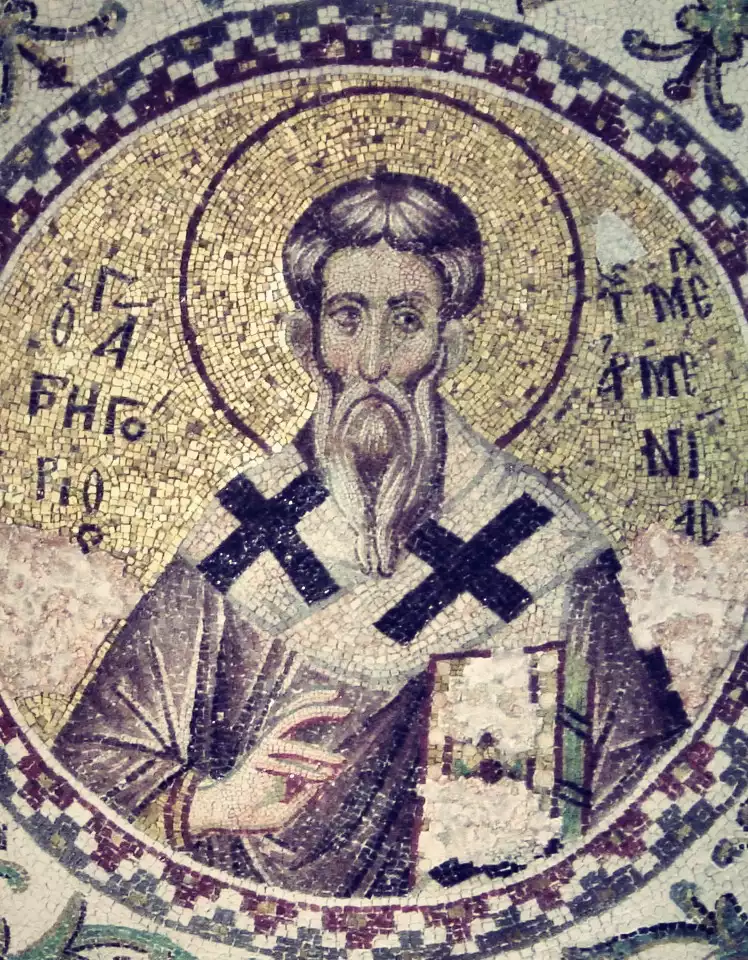
In 306 AD, Saint Gregory the Illuminator played a pivotal role in the conversion of Armenia to Christianity. As the first country in the world to adopt Christianity as its state religion, Armenia’s Christianization marked a major turning point in history. Saint Gregory brought the light of Christ to the Armenian people through his tireless efforts, miraculous works, and devotion to spreading the Gospel, Christianizing Armenia.
Saint Gregory Survives Persecution to Bring Christ to Armenia
Saint Gregory the Illuminator was born to a noble Armenian family in around 257 AD. While still an infant, tragedy struck when his father Prince Anak was assassinated by the hostile King Khosrov of Armenia. His mother was forced to flee with the baby Gregory, escaping over the border to Caesarea in Cappadocia. There Gregory was raised as a devout Christian in exile from his homeland.
As a young man, Gregory longed to return to Armenia and spread the message of Christ to his people still living in spiritual darkness. Against the advice of those around him, he boldly made his way back, beginning to preach openly in the Armenian city of Vagharshapat. However, he soon caught the attention of King Tiridates III who ruled the nation. The king, still staunchly pagan at that time, saw Gregory as a threat to his power and authority. He ordered his soldiers to capture this rebellious preacher and subjected him to gruesome torture, even throwing him into a deep underground pit known as the “Darkest Pit” for 12 long years.
Yet through divine providence, Gregory miraculously survived this harsh imprisonment. The pit was filled with the stench and filth of rotting bodies of those who had died there. Most prisoners thrown into it only lived a few days in its foul conditions. But Gregory endured over a decade through his unwavering faith, seeing it as a divine test to prepare him to one day illuminate Armenia with the Gospel truth.
Saint Gregory Triumphantly Converts the King and Nation
After over a decade languishing in the pit, Gregory was suddenly brought back into the light in a most unexpected way. King Tiridates had fallen gravely ill with a mysterious affliction that caused him to go mad. In his fits of madness, he began acting like a wild boar, even living among swine and feeding on garbage. None of the pagan priests could cure the king or ease his torment.
Finally Tiridates’ sister, Khosrovidukht, had a divinely inspired dream. In it Gregory appeared to her, revealing that only he could heal her brother. She convinced the court to pull Gregory up from the pit and bring him before Tiridates. When Gregory saw what torment the king was suffering, his heart was moved with compassion. Despite years of cruelty at Tiridates’ hands, Gregory forgot this evil and willingly sought to relieve his suffering through the power of Christ.
Praying over the deranged king, Gregory called upon God to work a miracle. Instantly Tiridates was freed from madness and fully in his right mind again. Realizing it was Gregory’s Christian God that healed him, Tiridates asked what he must do in return.
Through Saint Gregory’s unwavering faith and miraculous works, Armenia became the first nation in history to adopt Christianity. His valiant efforts illuminated a people steeped in darkness and transformed their kingdom into one guided by Christ’s everlasting light. Saint Gregory’s legacy continues to shine today, over seventeen centuries later, seen in the enduring Armenian Apostolic Church.
References
Agathangelos, History of the Armenians, 1976.
Antonyan, Yulia. “Religiosity and religious identity in Armenia: Some current models and developments.” Acta Ethnographica Hungarica 56.2 (2011): 315-332. Akadémiai Kiadó. Accessed February 13, 2023.
Chaillot, Christine, The Armenian Apostolic Church, 2016.
Karakashian, Meliné. “Armenia: A Country’s History of Challenges.” First published: 09 April 2010. Wiley Online Library. Accessed February 13, 2023.
Van Lint, The Armenian Apostolic Church, 2009.
